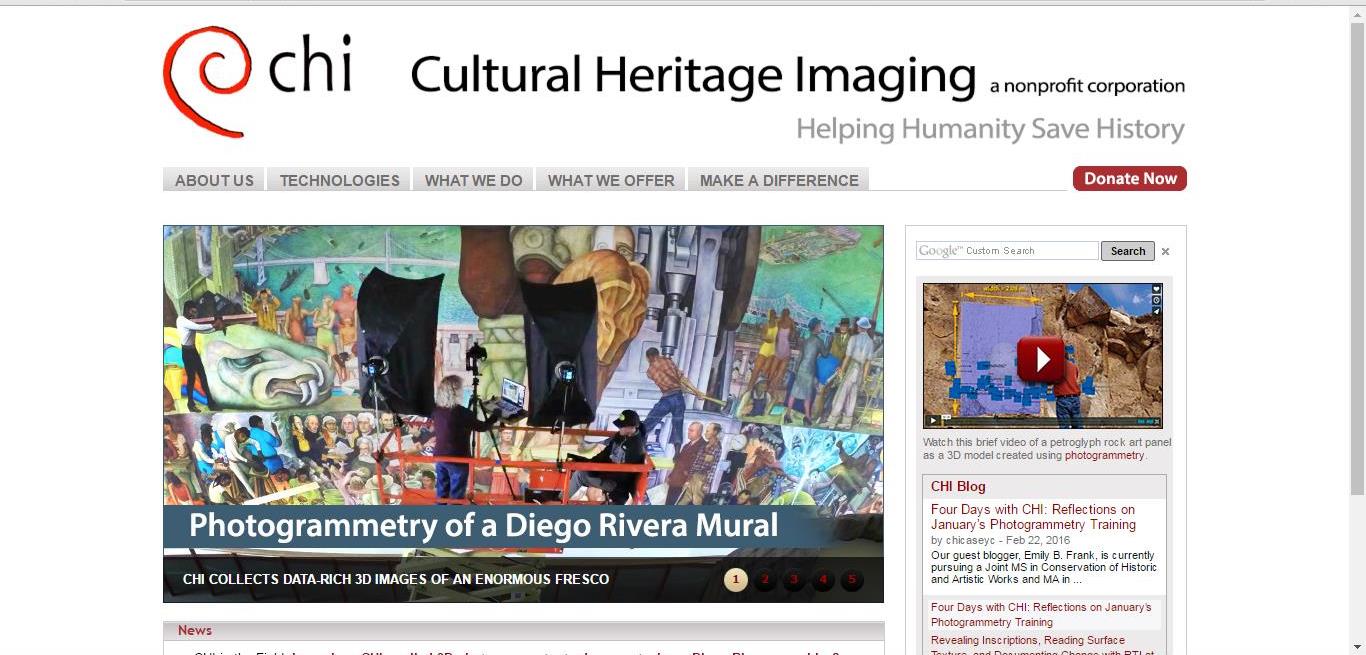Doubtless your news-feed, like mine, is flooded with stories about the “open” economy: the rise of open data, open software, open government. (For an introduction to the trend, revisit the related chapter in TrendsWatch 2015.) Many museums are releasing digital images of their collections under open licensing–encouraging users to download, adapt and reuse the content.Today, Carla Schroer, founder and director at Cultural Heritage Imaging tackles another aspect of “open”–open source software. Why would a company (even a nonprofit) choose to freely share all the code underlying their hard work? Carla explains why her nonprofit has adopted this approach, and makes a persuasive case for why museums, as collaborators and consumers, should care about the “openness” of software as well. You can follow CHI’s work on Twitter at @chimaging.
My organization, Cultural Heritage Imaging (CHI), has been involved in the development of open source software for over a decade. We also use open source software developed by others, as well as commercial software.
What drove us to make our work open for other people to use and adapt?
We are a small, independent nonprofit with a mission to advance the state of the art of digital capture and documentation of the world’s cultural, historic, and artistic treasures. Development of technology is only one piece of our work–we are involved in many aspects of scientific imaging, including developing methodology, training museum and heritage professionals, and engaging in imaging projects and research. Because we are small, and because the best ideas and most interesting breakthroughs can happen anywhere, we collaborate with others who share our interests and who have expertise in using digital cameras to collect empirical data about the real world.
Our choice to use an open source license with the technology that is produced in this kind of collaboration serves both the organizations involved in its development and the adopters of the software. By agreeing to an open source license, the people and institutions that contribute to the software development are assured that the software will be available and that they and others can use it and modify it now and in the future. It also keeps things fair among the collaborators, ensuring that no one group exploits the joint work.
How does open source benefit its users?
It’s beneficial not just because the software is free. There is a lot of free software that is distributed only in the “executable” version without making the source code available to others to use and modify. One advantage to users who care about the longevity of their data − and, in our case, images and the results of image processing − is that the processes being applied to the images are transparent. People can figure out what is being done by looking at the source code. Also, making the source code available increases the likelihood that software to do the same kind of processing will be available in the future. It isn’t a guarantee, but it increases the chances for long-term reuse. Finally, open source benefits the community of people all working in a particular area, because other researchers, students, and community members can add features, fix errors, and customize for special uses. With a “copyleft” license, like the Gnu General Public License that we use, all modifications and additions to the software have to be released under this same license. This ensures that when others build on the software, their modifications and additions will be “open” as well, so that the whole community benefits. (This is a generalization of the terms; read more if you want to understand the details of a particular license).

Open source is a licensing model for software, nothing more. The fact that it is “open” tells you nothing about the quality of the software, whether it will meet your needs, whether anyone is still working on it, how difficult or easy to learn and use it is, and many other questions you should think about when choosing technology. The initial cost of software is only one consideration in adopting a technology strategy. For example, what will it cost to switch to another solution, if this one no longer does what you need? Will you be left with a lot of files in a proprietary format that other software can’t open or use?
That leads me to remark on a related issue– open file formats. Whether you choose to use commercial software or open source software, you should think about how your data and resulting files will be stored and used. Almost always, you should choose open formats (like JPEG, PDF, and TIFF) because that means that any software or application is allowed to read and write to the format, which protects the reuse of the data in the long term. Proprietary formats (like camera RAW files and Adobe PSD files) may not be usable in the future. The Library of Congress Sustainability of Digital Formats web site has great information about this topic.
At Cultural Heritage Imaging, we use an open source model for development of imaging software because it helps foster collaboration. It also provides transparency as well as a higher likelihood that the technology and resulting files will be usable in the future. If you want to learn more about our approach to the longevity and reuse of imaging data, read about the Digital Lab Notebook.
Elizabeth Merritt











